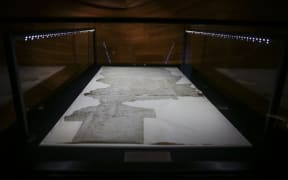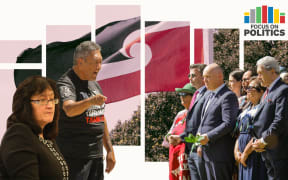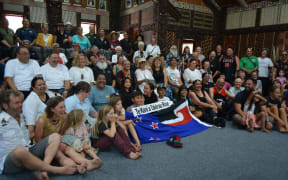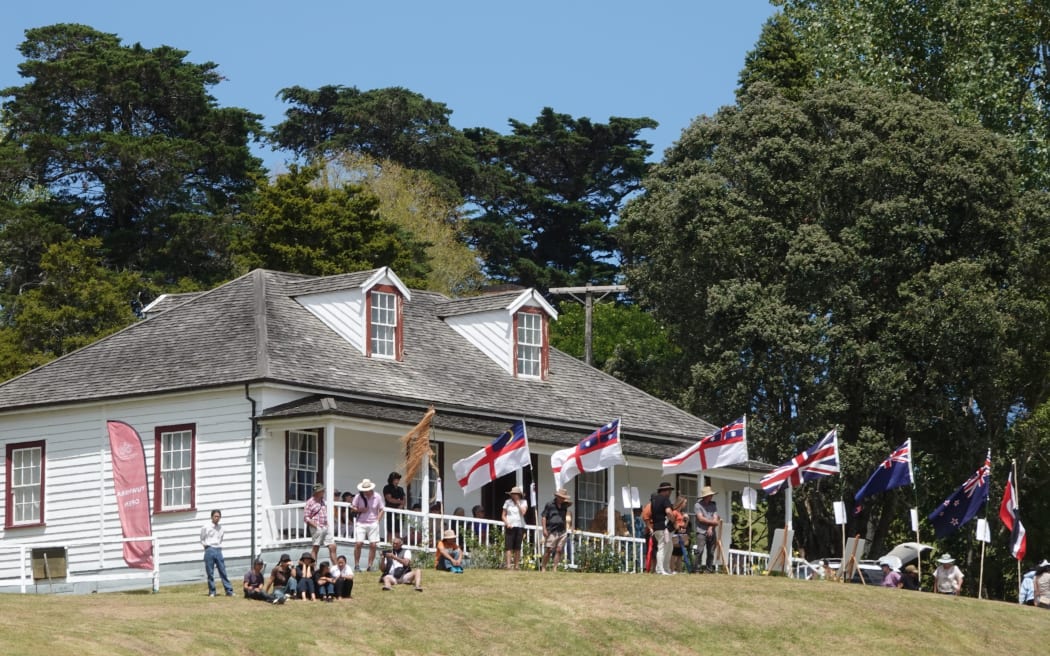
The commemorations were held on the grounds of the Heritage New Zealand property Mangungu Mission Station. Photo: RNZ / Peter de Graaf
The single biggest signing of Te Tiriti o Waitangi has been remembered with a day of kōrero, kai and kinship by the shores of Northland's Hokianga Harbour.
On 12 February, 1840, more than 3000 Māori gathered at Mangungu in South Hokianga, where 64 rangatira (chiefs) put their tohu (signatures) to the document.
That dwarfed the 40-odd signatures gathered at Waitangi, on the opposite coast, six days earlier.
Monday's commemorations included a rousing haka pōwhiri, mihimihi, speeches in te reo and English addressing the significance of the Hokianga signing and the need to uphold the promises of Te Tiriti, a waka salute, and a hākari or feast.
The event, at the historic Mangungu Mission Station, drew more than 400 people and was striking for the large number of Pākehā attending along with descendants of the signatories of 184 years earlier.
It took place in blazing sunshine overlooking what Rātana minister Manahi Mauheni described as "a million-dollar view" across Hokianga Harbour.

Rātana minister Manahi Mauheni addresses the crowd. Photo: RNZ / Peter de Graaf
Dallas King, a hapū kaikōrero (speaker) for Ngāti Kaharau and Ngāti Hau ki Hokianga, said the Mangungu signing was significant not just because of its size.
Around the country, chiefs often had to travel to other areas, where tikanga (customs) was different, to sign Te Tiriti.
In the case of the Hokianga signing, the Treaty document came to the chiefs.
"So it's more than just the number that signed at Mangungu. It's the place where we can say with certainty, as uri [descendants] of Hokianga, that our tikanga was being upheld when our tūpuna made the decision to sign Te Tiriti."
Monday's commemoration was more significant than usual given the "disruptive and dishonest" interpretation of Te Tiriti being promoted by some individuals, she said.
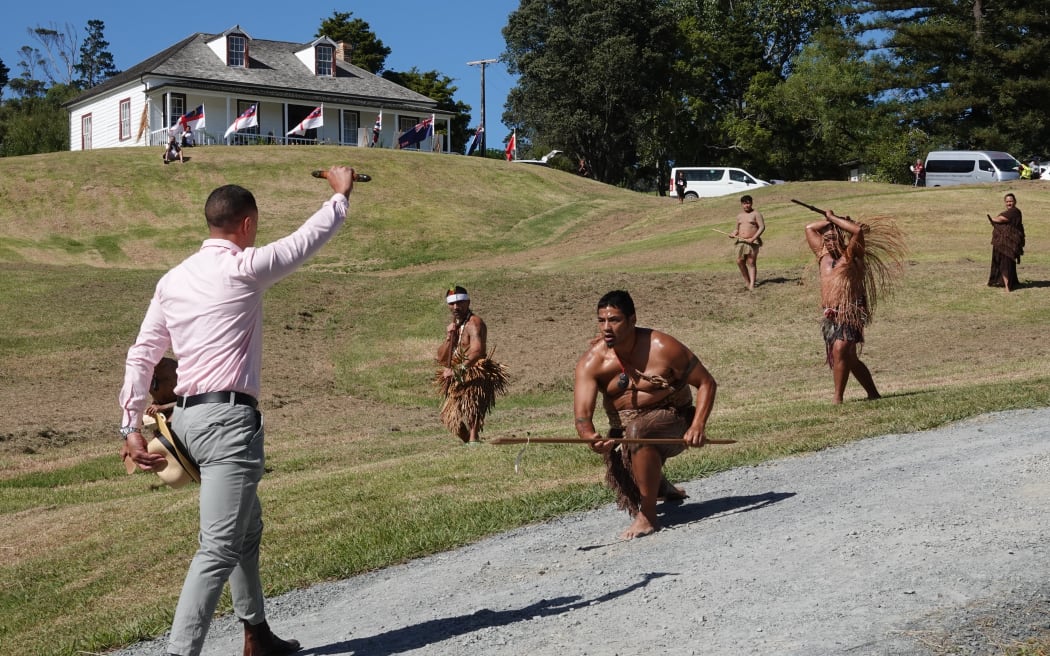
Far North District councillor Tāmati Rākena accepts the challenge laid down by kaiwero Anton Fa’atau. Photo: RNZ / Peter de Graaf
"It's important because it reconnects us to the agreement that we made and encourages not only us to honour that agreement, but also to require the other party in that agreement to honour us in return," King said.
"There's a lot of scaremongering going on, but actually if you look here today there are a lot of tangata Tiriti ("people of the Treaty") and a lot of tangata whenua who have come on a shared journey of understanding.
"I hope what everyone gets out of today, is that partnership can work, and does work, when there is equity between the two partners - and that requires respect, and recognition that we are tangata whenua."
Pene Tawhara, one of the event organisers, said the rangatira who signed at Mangungu accepted the ideas of "partnership, working together and rowing the waka together".
However, if one side was not holding up its end of the bargain, that partnership was null and void.
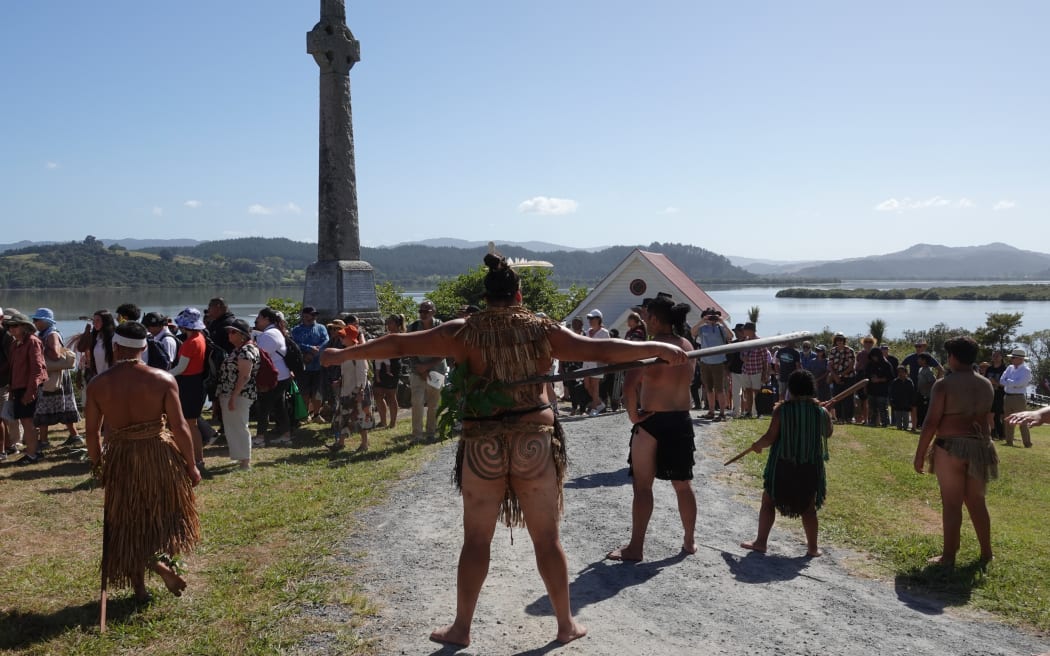
Kaiwero direct the manuhiri (guests) to their seats for the speeches of welcome. Photo: RNZ / Peter de Graaf
Tawhara said the current political climate had "definitely" lifted interest in the event.
"Our people are moving, and they want to be united as one movement," he said.
Speaker Julian Wilcox, a descendant of one of the signatories and a representative of Te Māhurehure hapū from Waimā, urged those present to think about why their ancestors signed Te Tiriti and what kind of future country they envisaged.
The RNZ broadcaster also emphasised the importance of the signing at Mangungu.
"I always say the signing on 6 February opened the door, but the signing here confirmed that Ngāpuhi were committed to the guarantees given by the Crown and in particular by Governor Hobson, and that's why they signed," Wilcox said.
"After Waitangi some had concerns about what they'd just signed, to the point where some asked for their tohu to be removed from the document.
"Mangungu is significant because it was the place where Ngāpuhi confirmed what had happened at Waitangi, and that allowed the Crown to move forward."
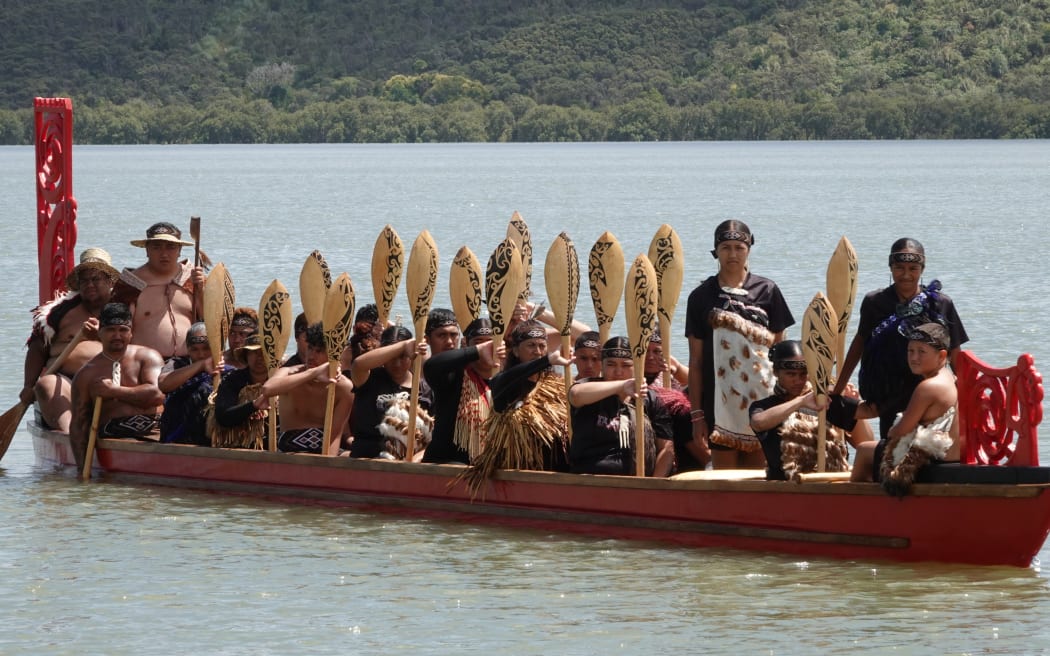
The crew of the waka Mai Pewhairangi perform a salute. Photo: RNZ / Peter de Graaf
The signing at Mangungu also showed Ngāpuhi were very clear about the promises made by Governor Hobson, Wilcox said.
Another factor lending significance to the Hokianga signing was the role of the French.
The French influence in Hokianga was particularly strong, thanks to Bishop Pompallier's introduction of Catholicism to the area in 1838.
"So the Crown needed Hokianga more than Hokianga needed the Crown. Having British governance here was a way of repelling the French, who had already made their place here. They [the chiefs] did not need the Crown, but they were guaranteed certain things in Te Tiriti, and that's why they signed."
Last year's commemorations at Mangungu were cancelled when Cyclone Gabrielle struck Northland on the anniversary of the signing.
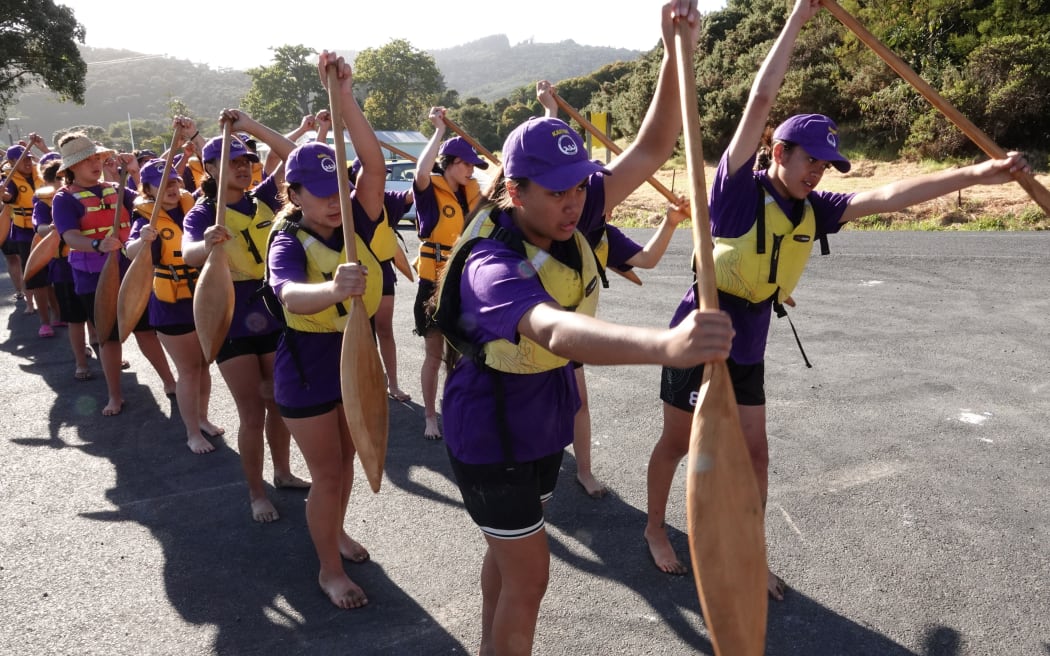
Young kaihoe (paddlers) from the waka Kaitoki practise paddle drills at Horeke. Photo: RNZ / Peter de Graaf


